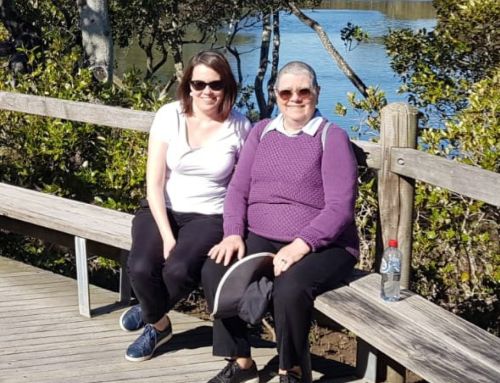Human papillomavirus (HPV) is a major risk factor for the development of cervical cancer. 4 March is International HPV Awareness Day, and many people are still not aware of the help available in avoiding HPV and cervical cancer.

Assoc Prof Alison Brand AM contributed to new guidelines for cervical cancer screening
The first defence against HPV is the body’s immune system, which is known to fight off many forms of HPV infections. Secondly, vaccinations for the strains of HPV most associated with cervical cancer are widely available and strongly recommended for boys and girls during adolescence.
The National Cervical Screening Program‘s (formally the Pap test) testing works much the same as in the past (the assessment of cells from the surface of the cervix), but instead of testing for abnormally formed cells, the test now determines the presence of HPV. This new way of testing allows for a person’s risk of developing cervical cancer to be determined far greater in advance.
Based on the results of the test, a patient may be referred for another screening test in 12 months, 5 years or directly to a specialist. It usually takes 10 or more years for HPV to develop into cervical cancer, and cervical cancer is a rare outcome of a HPV infection. If a woman becomes infected with HPV the day after her test, it is not likely the infection will cause problems within the following five years before her next HPV test.
National Cervical Screening Program Guidelines:
If you’re aged 25-74 and have a cervix, you need a Cervical Screening Test every five years. If you’ve already received the HPV vaccine, it’s still important to take part in regular cervical screening.
- Your first Cervical Screening Test is due two years after your last Pap test.
- If it’s been more than two years, talk to your doctor or nurse about getting screened as soon as possible.
- After your first Cervical Screening Test, you will only need screening every five years.
Testing is recommended to all persons over the age of 25 who have a cervix and shown to be instrumental in reducing the incidence of cervical cancer. “Women will now only need to have the screening test every 5 years starting at age 25 and continuing to age 70 to 74” said Associate Professor Brand AM, Gynaecological Oncologist and ANZGOG Member. The benefits for women will be less frequent and more effective testing.
“It is estimated that 22% less women will die of cervical cancer, thanks to this new screening test”.
The current vaccination and screening programs have been very effective against the most common type of cervical cancer, but they have made no difference to the rate of adenocarcinoma, which accounts for 15% of cervical cancers. The new HPV test has the potential to reduce the rates of adenocarcinoma.
For more information about the cervical screening tests, click here. To learn more about cervical cancer, please visit Cancer Australia’s website.
ANZGOG is a leader in the field of gynaecological oncology clinical trials. The OUTBACK trial was a landmark cervical cancer trial, from which the results will be shared in the near future.










